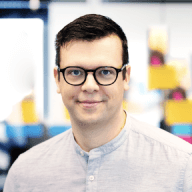Experiment Tracker
Why use the Experiment Tracker?
Companies and teams spend too much time and money on ideas that don’t work. In a world that is getting filled up with new technologies every day, we can’t reliably predict what will work. We as business, design, and product leaders must inspire our teams and collaborate across the org to drive action in a structured and fact-based manner.
The Experiment Tracker is a simple 5-step process to gain more clarity about what actually works, turning successful outcomes into backlog ready items. Furthermore, I took the canvas and adapted it a bit for myself after years of experimentation with different kind of clients.
How to use the Experiment Tracker
Collect all assumptions besides the canvas. Usually start with "We believe if we do X, we will achieve Y"
Prioritize them by risk: Which one can kill your idea right away. Start with assumptions around the customer, pains, jobs and needs as the riskiest one.
Brainstrom fast ways to test this assumption. From early interviews to live-video prototypes, it's up to you to decide WHAT you want to test with WHOM and HOW.
Define which data you want to measure and which targets you need to meet to call it a success.
Take time to craft the experiment and run it.
Come back and collect all findings. Distill key insights out of it. Any surprises?
Define how you want to continue: Kill this idea right away, give it another chance with some adjustments (pivot) or continue like is (persevere)
Enjoy the journey
Common challenges and mistakes to avoid. Teams...
Start with more than one experiment and loose focus
Overestimate the success of their solution, keep in mind: If you don't reach the target you might consider to kill the idea
Set the bar too low. A good benchmark for eg for measuring interest at IKEA is min. 40% of early adaptors need to like the idea
Don't know which metrics to measure: You can use the AARRR framework to get started
Are not well mixed and miss out certain perspective (tech, design, product, sales, finance, marketing etc.)
Are thinking too big creating the first experiment. What is the minimum thing you need to do to learn?



Comments
Read our Community Guidelines and Terms of Use.